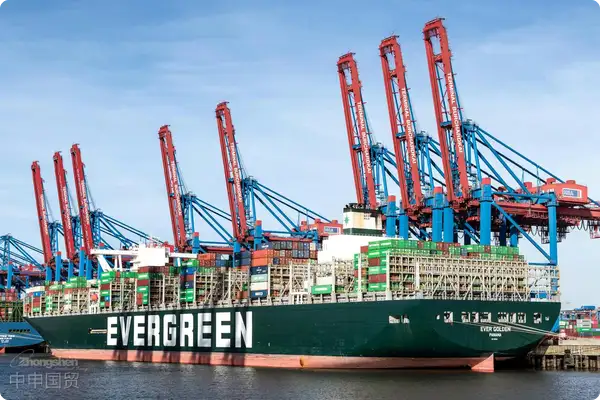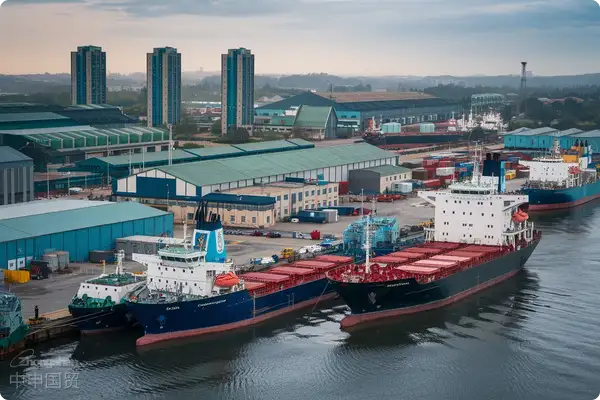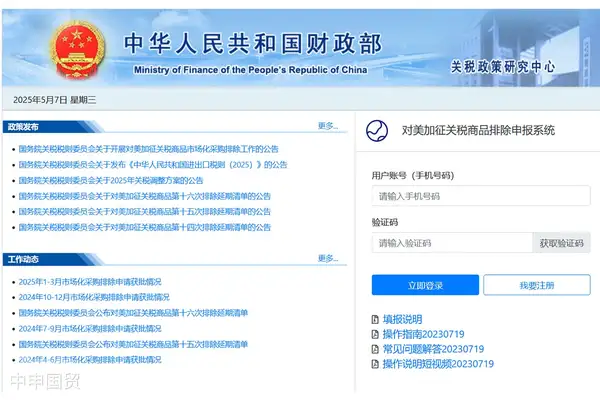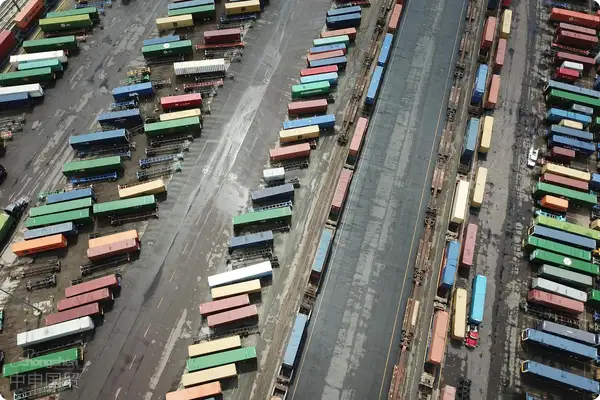Analysis of five core differences between self-imported and agency-imported equipment
91精品国产综合久久香蕉观看 |
国产日产欧美一区二区在线观看
|
一区二区三区四区欧美日韩日本道 |
国产农村妇女一二三区 |
高清不卡一卡二卡区在线 |
99riav国产精品视频一区
|
精品国产乱码久久久久久软 |
日韩欧美一区二区三区中出内射
|
91精品国产91久久久久久 |
亚洲成a人片在线观看无遮挡 |
久久婷婷色香五月综合图
|
日本高清区一区二区三区四区五区 |
色综合天天综合网国产人 |
国产精品久久久久大屁股精品性色 |
黄色av网址网站能看的 |
中文字幕乱码亚洲无线码二区 |
国产精东av剧情在线一区二区 |
国产91亚洲精品久久久 |
精品亚洲午夜久久久久四季 |
日韩国产精品综合高清av= |
亚洲欧美日韩综合另类一区 |
久久久91精品国产一区二区精品 |
免费看国产污黄剧情网站 |
亚洲人妻一区二区三区av |
日韩av在线不卡免费看 |
国产精品亚洲二区在线看 |
白嫩丰满少妇一区二区三区 |
国产综合久久久一区二区三区 |
婷婷99精品国产97久久综合
|
亚洲十大美女色爽av毛片下载 |
久久五月婷婷爱综合亚洲
|
黄色av网站未满十八周岁在线播放 |
美女露小粉嫩91精品久久久 |
青青草亚洲综合成人一区 |
99久久精品氩 99久久久 |
日韩一区日韩二区日韩三区 |
欧美人在线一区二区三区 |
黄色欧美精品一区二区三区 |
日韩一区二区三区四区在线观看视频
|
日韩欧美亚洲国产精品字幕久久久 |
国产成人亚洲欧美在线二区小说
|
亚洲av中的一区二区三区四区
|
日韩中文字幕有码午夜美女 |
国产精品久久久精品一级
|
精品一区二区三区视频男人吃奶 |
亚洲天堂熟女一区二区三区 |
久久99国产综合精品伦理片 |
日韩精品人妻中文字幕有码网址 |
国产女同性恋一区二区三区 |
久久久精品欧美一区二区免费
|
国产在线观看精品区一区 |
色婷婷av一区二区三区免费 |
欧美日韩精品一区二区在线看 |
亚洲熟妇中文字幕五十路 |
午夜三级视频久久国产丝袜美腿 |
国产91精品露脸国语对白 |
妖精视频一区二区三区四区 |
久久九九视频免费观看久久九九视频
|
亚洲电影在线一区二区三区 |
97视频在线观看男人的天堂 |
国产一区二区三区在线啊 |
日本一区二区在线视频观看 |
99久久精品免费看国产一区 |
亚洲视频国产视频自拍视频 |
香蕉91成人一区二区三区网站 |
91青青青手机频在线观看 |
尤物精品国产亚洲亚洲av麻豆 |
国产成人凹凸视频在线观看不卡
|
婷婷六月开心六月色六月 |
91国偷自产中文字幕幕 |
欧美视频黄页大全在线观看 |
国产精品美女久久福利网站 |
国产91色综合久久免费分享 |
91麻豆精品国产自产在线的 |
日韩免费高清中文av |
亚洲国产精品久久久久性色av |
国产69精品久久777的观感
|
成人黄色小视频下载网站 |
国产精品成av人在线观看片 |
国产av剧情精品老熟女 |
久久偷拍国内亚洲青青草 |
手机在线不卡二区中文字幕 |
国产欧美一区二区三区精剧 |
日韩在线一区二区三区中文字幕 |
亚洲一区二区三区四区91 |
制服丝袜视频一区二区三区 |
92看看午夜福利合集免费观看 |
小泽玛利亚av在线视频 |
51国产午夜精品免费视频 |
国产一区二区在线播放黄色高清
|
国产自产一区二区三区视频
|
一区二区三区日本韩国欧美 |
狠狠人妻久久久久久综合密桃
|
yyy6080韩国三级理论久久 |
亚洲十八禁在线免费观看 |
久久久精品国产亚洲av网丝祙 |
日本精品动漫一区二区三区 |
国产精品亚洲精品日韩已满十八小 |
国产成人凹凸视频在线观看不卡
|
美女一区二区三区亚洲麻豆 |
污污污的网站在线免费看 |
久久精品一二欧美无婷婷 |
日韩一区二区三区四区在线观看视频 |
欧美色精品视频在线观看 |
婷婷四房综合激情五月在线 |
国产精品性色一区二区三区在线蜜 |
巨乳人妻的诱惑电影日本 |
欧美一区二区日本国产激情 |
尤物精品国产亚洲亚洲av麻豆 |
亚洲国产精品久久久av |
日本人妻久久久久久久久 |
亚洲精品成人天堂一二三
|
玩弄人妻少妇精品视频网站 |
免费看污片网站在线观看 |
haoleav一区二区三区 |
亚洲av午夜精品久久久 |
最新国产美女一区二区三区
|
国产亚洲一区二区三不卡 |
午夜视频在线观看视频在线观看视频 |
91麻豆精品国产自产在线的 |
久久精品久久精品久久精品 |
精品国产乱码久久久久久软
|
五月天丁香色婷婷中文字幕 |
粉嫩一区二区三区精品视频 |
99国产精品久久久久久久久 |
欧美一区两区三区在线观看 |
美女一区二区三区亚洲麻豆 |
国语自产精品视频在线视频学生
|
国产欧美另类久久久精品不卡 |
国产亚洲一区二区三不卡 |
久久麻豆精亚洲av品国产精品
|
亚洲国产精品一区二区免费电影
|
国产精品亚洲美女av网站 |
亚洲无人区乱码中文字幕 |
亚洲天堂一区二区三区天堂古代 |
欧美黄色男人日女的阴道 |
欧美激情一区二区三区啪啪啪
|
日韩av高清中文字幕在线观看 |
亚洲av日韩一级片免费看 |
国产主播欧美日韩在线播放 |
日本加勒比中文字幕在线观看 |
日本大香蕉一本到免费无一码 |
日本不卡一区二区三区在线免费 |
日韩欧美中文字幕一区二区三区
|
国产高颜值美女主播在线 |
国产一区二区三区日韩精品 |
国产欧美日韩亚洲第一第二页
|
免费主播福利视频韩国日本
|
96国语自产免费精品视频 |
日本高清不卡中文字幕免费 |
小泽玛利亚电影免费在线观看
|
亚洲精品久久久久久宅男 |
国产精品69堂凸凹视频 |
在线观看麻豆91精品国产
|
蜜臀av免费一区二区三区观看 |
国产在线精品二区一东京热 |
同房后下面流黄黄的液体 |
亚洲情色av在线免费观看 |
美国毛片亚洲社区成人看 |
日本一区欧美二区国产三区 |
97影院成人午夜电影在线观看
|
91国偷自产中文字幕幕 |
91亚洲国产成人久久精品蜜臀 |
国产一级二级三级在线观看视频
|
久久久久精品久久综合av |
午夜视频久久播五月婷婷 |
未满十八勿进黄网站一区不卡 |
高清亚洲中文字幕一区二区 |
一区二区三区久久久久国产精品 |
日韩久久精品视频一二三区 |
亚洲大色堂国产资源在线观看 |
制服丝袜中文字幕一区二区 |
北岛玲成人精品一区二区三区
|
人妻体体内射精一区二区 |
欧美黄色免费网站在线观看 |
欧美成人午夜一区二区三区 |
高清精品一区二区三区伊人 |
97性潮久久久久久久久播 |
无人区码一码二码三码区 |
五月婷婷丁香综合中文字幕 |
国产欧美精品一区二区在线
|
午夜视频在线观看精品200 |
适合一家人看的国产电影
|
美女一区二区三区亚洲麻豆 |
99久久一区二区三区免费 |
少妇的一区二区三区四区 |
乱色老熟妇一区二区三区 |
欧美一区二区三区高清在线视频
|
噜噜噜久久亚洲精品国产品
|
日本中文字幕视频在线观看 |
亚洲一区二区三区在线高清 |
黄色影院在线观看一区二区 |
久久国产亚洲精品超碰热 |
亚洲精品成人av一区二区 |
国产一区二区三区色噜噜蝌蚪 |
日本人妻与家公的伦理片
|
日韩精品 中文字幕 有码系列 |
欧美日韩久久久一区二区三区 |
91精品国产91久久福利 |
亚洲成a人片在线观看无遮挡 |
久久精品国产亚洲av日韩 |
欧美视频黄页大全在线观看 |
蜜臀av在线精品国自产拍 |
国产一区免费在线观看99
|
一区二区三区在线观看日韩 |
一区二区三区高清视频精品
|
小泽玛利亚电影免费在线观看 |
国产亚洲欧美一区二区精 |
日韩av在线不卡免费看 |
精品国产网址免费在线观看 |
91精品国产综合久久久久久蜜月 |
国产亚洲精品久久久久久久久动漫
|
久久精品亚洲欧美日韩精品中文字幕 |
午夜激情福利在线免费看 |
亚州国产欧美一区二区三区 |
亚洲日本精品麻豆一区国产 |
在线精品日韩亚洲欧一二三区
|
国产精品一区二区三区色噜噜 |
精品亚洲国产成人痴汉av |
亚洲国产精品线路久久 |
国产女同av一区二区三区 |
99精品国产一区二区三区网站 |
亚洲一区二区三区毛带片 |
黄色欧美精品一区二区三区 |
国产中文高清日韩av网站 |
欧美极品色午夜视频在线观看 |
午夜人妻av一区二区三区 |
日本动漫人妻作爱大尺度
|
日韩特一级a毛大片欧美大片 |
亚洲国产日韩精品福利一区
|
中文字幕一本一道在线 |
极品少妇被弄得99精品欧美 |
一区二区三区久久久久国产精品 |
日韩国产亚洲一区二区三区 |
欧美成人免费va影院高清 |
日本欧美韩国国产一区 99 |
欧美国产成人久久精品直播
|
av小说亚洲日中文字幕 |
韩国三级华丽外出在线观看 |
色婷婷综合午夜色荡天天 |
精品国产一区二区三区久久久性
|
国产一区二区三区精品成人爱 |
中文字幕精品一区二区三区老狼 |
在线观看日韩中文字幕av
|
免费特污的视频在线观看亚洲不卡 |
国产自产一区二区三区视频
|
久久久一区二区三区999 |
日韩国产亚洲一区二区三区 |
亚洲日本精品麻豆一区国产 |
日本伦理在线观看中文字幕 |
亚洲精品国产成人综合久久久小说
|
加勒比久久伊人欧美国产 |
成人av一区二区三区免费在线 |
欧美一区二区三区免费观看视频 |
97久久夜色精品国产蜜桃 |
在线小视频一区二区三区 |
国产高清在线精品一区二区三 |
99re热在线视频精品观看 |
雅日韩欧美一区二区三区 |
97久久久综合亚洲久久88 |
欧美熟妇一区二区三区仙踪林 |
97影院成人午夜电影在线观看 |
91精品国产薄丝高跟在线播 |
日韩十八线网站操操搞黄色 |
日本人妻与家公的伦理片 |
亚洲va欧美va人人爽高清 |
国产拍欧美日韩视频一区 |
精品国产熟女一区二区三区 |
开心五月激情五月婷婷综合网 |
日本高清视频在线网站不卡 |
中国一区二区三区高清电影
|
久久精品国产亚洲av蜜臀 |
日韩在线观看中文字幕一区二区 |
久久久91精品国产一区二区精品 |
久久亚洲中文字幕精品熟女一区
|
亚洲限制级电影一区二区 |
亚洲国产精品线路久久 |
99久久精品免费看蜜桃 |
亚洲国产精品久久久av |
一区二区三区四区中文字幕欧美 |
亚洲精品一区二区三区免 |
亚洲欧美一区二区三区爽爽爽 |
日本免费电影在线观看一区二区三区
|
欧美日韩精品一区二区中文字幕 |
大香蕉再在线大香蕉再在线 |
欧美精品国产日韩一区二区三区 |
亚洲天堂男人天堂一区二区 |
黄色片黄色片黄色片亚洲黄色片
|
久久九九视频免费观看久久九九视频
|
国产成人精品综合久久久久换脸 |
久久婷婷六月丁香综合啪 |
一区二区精品电影在线观看 |
色哟哟一区二区三区中文字幕 |
国产欧美日韩综合二区三区 |
亚洲区激情区图片小说区 |
黄页男女视频网址大全免费观看 |
欧美一区二区三区免费在线观看
|
久久国产精品一区二区三区精品 |
亚洲av精品一区二区三区四区
|
亚洲黄色av一区二区在线观看 |
久久国产精品骚熟女av |
国产偷国产偷亚洲高清日韩 |
精品一区二区三区成人免费视频
|
日本高清视频在线网站不卡 |
国产日产欧美一区二区在线观看 |
极品少妇被弄得99精品欧美 |
久久乐国产精品一区二区三区 |
国产主播一区二区三区在线观看 |
视频区自拍偷拍一区二区 |
顶级尤物极品女神福利视频 |
最新亚洲电影一区二区三区 |
亚洲欧美日韩中文字幕高清 |
欧美黄色一区二区在线观看
|
五月婷久久不能精品视频 |
国产av一区二区日夜精品剧情 |
色姑娘天天操天天日天天舔 |
精品国产一区二区三区蜜臂 |
欧美精品欧美一区二区精品久久久 |
亚洲国产成人激情视频在线 |
国产精品亚洲专区一区二区三区
|
中文字幕日韩欧美日韩在线 |
欧美不卡一二三在线视频 |
日本一区二区三区不卡视频在线 |
一本之道av免费在线观看 |
欧美成人精品一区二三区在线观看 |
日韩欧美亚洲国产精品字幕久久久 |
黄色av网站未满十八周岁在线播放 |
熟女av综合一区二区三区 |
中文字幕欧美激情一区二区 |
精品少妇极品久久久久久久 |
日韩不卡一区二区三区四区 |
高清亚洲中文字幕一区二区 |
国产精品亚洲美女av网站 |
亚洲中文字幕中文字幕中文字幕 |
亚洲国产色一区二区三区 |
日本精品免费偷拍小视频网 |
亚洲av成人一区国产精品 |
亚洲av精品一区二区三区四区 |
中国一区二区三区高清电影 |
亚洲精品亚洲人在线观看 |
男人av天堂男人的网站 |
日韩精品一区二区三区射精 |
9l精品国产高清一区二区三区 |
亚洲av中文有码免费观看
|
国产中文高清日韩av网站 |
黄页男女视频网址大全免费观看
|
亚洲精品高清视频在线播放 |
久久精品国产热久久精品国产亚洲 |
午夜午夜精品一区二区三区
|
91精品国产亚洲爽啪在线影院 |
在线观看特黄片一区二区二区 |
手机在线观看国产一区二区三区 |
黄色三级电影一区二区三区四区 |
久久精品成人一区二区三区蜜臀
|
亚洲国产精品线路久久 |
国产精品羞羞答答色哟哟 |
亚洲av精品一区二区三区四区 |
亚洲日本精品麻豆一区国产 |
日韩 中文字幕高清最新 |
国产精东av剧情在线一区二区 |
精品国产女同一区二区三区 |
综合自拍亚洲综合图区欧美 |
久久精品店一区二区三区 |
少妇的一区二区三区四区
|
精品夜夜嗨av一区二区 |
亚洲一区二区三区自拍偷拍 |
亚洲大色堂国产资源在线观看 |
日本电影777久久久 |
毛片毛片视频毛片视频的毛片 |
制服丝袜视频一区二区三区 |
尤物精品国产亚洲亚洲av麻豆 |
亚州中文字幕乱码中文字幕 |
亚洲天堂男人天堂女人天堂
|
最近高清中文字幕一区二区 |
欧美一区二区三区四区五 |
日韩精品 中文字幕 有码系列
|
久久精品国产96精品亚洲拳交 |
亚洲欧美日本在线视频观看 |
97久久伊人嫩草一区二区三区 |
在线日本一区二区免费观看 |
久久国产综合伊人77777 |
红杏开心五月天中文字幕 |
日韩电影免费看中文字幕 |
欧美高清亚洲一区二区在线观看
|
亚洲欧洲日韩国产免费 |
国产激情澎湃视频在线观看 |
一区二区三区手机在线播放 |
欧美天堂一区一区二三区 |
久久天天躁夜夜躁狠狠躁 |
顶级黄片av一区二区三区精品 |
人人妻人人玩人人澡人人爽理论片 |
欧美一区二区三区免费在线观看 |
亚洲熟女av综合一区二区三区个 |
日韩精品成人av免费看 |
国产精品免费在线一区二区 |
国产一区二区精品美女诱惑我 |
中文字幕 日韩经典 人妻 |
久久五月婷婷爱综合亚洲 |
日韩不卡一区二区三区四区 |
真实国产老熟女粗口对白 |
亚洲无人区乱码中文字幕 |
国产精品久久久亚洲综合天堂
|
日韩成人手机视频在线观看 |
雅日韩欧美一区二区三区 |
亚洲精品乱码久久久久久电影
|
综合久久久久综合综合久久久久 |
91精品国产综合久久久久久蜜月 |
国产精品亚洲二区在线看 |
91麻豆精品国产91久久久熟女
|
欧美日韩国产欧美日韩国产欧美日韩 |
欧美日韩国产三级一区二区三区 |
在线观看麻豆91精品国产 |
国产精品一区二区白浆视频 |
亚洲国产成人久久一区二区三区 |
五月天最新网址精品综合 |
欧美色精品视频在线观看 |
99精品这里只有免费精品 |
毛片毛片视频毛片视频的毛片
|
国产精品自产在线观看一 |
2中文字幕版亚洲无乱码 |
欧美日韩中文字幕色费性龙做 |
国产精品久久久久久一区 |
国产欧美韩日一二精品专区 |
国产一区二区三区精品区在线 |
欧美黄色一区二区在线观看 |
亚洲人成网站18禁止天堂 |
亚洲av极品男人的天堂观看
|
午夜天堂精品久久久久91色爱 |
国产精品亚洲av蜜桃三区 |
亚洲精品一区二区三区四区av |
国产精品97久久久久久毛片 |
激情五月婷婷丁香六月 |
日韩精品欧美激情一区二区
|
欧美久久久久久久一区二区三区
|
欧美岛国精品综合一区二区久久 |
av免费在线观看资源网站 |
综合久久五十路熟女中出 |
在线观看免费视频伊人网 |
欧美成人精品一区二三区在线观看 |
精品国产aⅴ一区二区三区在线看 |
国产av一区二区色呦呦 |
国产丝袜美女av一区二区三区 |
欧美激情精品久久久高清 |
国产专区一线二线三线av |
成人欧美一区二区三区视频 |
午夜天堂av天堂久久久 |
久久精品国产一区二区涩涩 |
国产乱人精品视频69av |
在线精品国产亚洲av日韩 |
精品国产99久久久成人 |
不卡国产精品爽黄69天堂 |
国产看片色网站亚洲av |
国产一区二区三区日韩精品 |
国产精品宅福利无圣光视频 |
一本不卡欧美一区二区三区 |
91久久国产综合久久91 |
美女性黄久久久国产精品 |
国产精品女人高潮毛片视频 |
国产看片色网站亚洲av |
欧美日韩综合中文字幕一区二区 |
中文字幕黄色综合网免费 |
久久乐国产精品一区二区三区 |
真实国产老熟女粗口对白 |
88精品视频一区二区三区四区 |
午夜激情丝袜美腿诱惑影院 |
色哟哟一区二区三区中文字幕 |
亚洲欧美中文日韩另类特殊
|
国产一区二区三区精品区在线 |
国产99视频精品免费视频美女 |
国产亚洲精品综合一区二区 |
亚洲成a人片在线观看无遮挡 |
国产美女捏自己奶头91 |
欧美黄色免费网站18禁久久 |
亚洲精品乱码久久久久久电影 |
日本无限不卡1区2区3区 |
适合一家人看的国产电影 |
欧美亚洲国产日韩在线观看 |
91福利社区在线试看一分钟 |
亚洲大色堂国产资源在线观看 |
久久精品国产亚洲欧美成人 |
久久精品国产一区二区涩涩 |
999中文视频在线观看 |
亚洲无人区乱码中文字幕 |
清纯唯美亚洲色图在线视频 |
亚洲av中文有码免费观看 |
五月开心婷婷六月丁香婷 |
国产精品黄网站免费进入 |
亚洲十八禁精品成人一区二区 |
2中文字幕版亚洲无乱码 |
亚洲伦理中文字幕一区二区 |
成人国产一区二区三区精品不卡
|
花野真衣在线观看av中出 |
精品国产日韩欧美另类免费观看
|
92精品欧美一区二区三区 |
黄色av网址网站能看的 |
国产午夜精品一区二区三区不卡 |
国产无套精品白浆在线观看 |
久久精品久久久久一区二区 |
99re热在线播放视频 |
人妻少妇精品一区毛二区 |
精品国产污污在线18禁 |
国产一区二区精品美女诱惑我
|
欧美在线不卡视频每天更新 |
手机在线一区二区三区观看 |
日本片一区二区在线视频 |
99re热在线播放视频 |
亚洲熟女少妇一区二区三区 |
日韩精品在线观看一二三 |
蜜臀欧美精品一区二区免费看 |
日韩特级黄色大片在线观看 |
欧美日韩加勒比激情系列 |
综合国产精品久久久久久久 |
小泽玛利亚影片在线观看 |
黄色片黄色片黄色片亚洲黄色片 |
最新亚洲电影一区二区三区 |
综合图区亚洲欧美另类图片
|
欧美日本一区二区免费看 |
国产日韩欧洲亚洲一二三区 |
亚洲日本中文字幕高清在线 |
欧美一区日韩二区日韩二区 |
国产午夜精品一区二区三区不卡 |
色婷婷一区二区三区四区成人
|
美日韩人妻精品一区二区三区
|
久久国产精品一区二区三区精品 |
亚洲熟女熟妇av一区二区三区
|
欧美一区二区三区综合色 |
亚洲午夜一级艳片欧美精品 |
欧美日韩综合中文字幕一区二区 |
免费大片a一级久久国产 |
国产高颜值美女主播在线 |
91国偷自产中文字幕幕 |
日韩不卡一区二区在线观看 |
国产精品双马尾后入爆操 |
综合图区亚洲欧美另类图片 |
欧美一区二区在线电影网 |
色婷婷在线免费观看视频
|
日本精品免费偷拍小视频网 |
欧洲欧美精品日韩色午夜 |
日韩欧美人妻精品91高清久久 |
日韩精品一区二区亚洲av性色 |
综合图区亚洲欧美另类图片 |
久久天堂一区二区三区av
|
国产日本亚洲一区二区三区 |
欧洲精品一区二区三区中文字幕 |
久久天天躁夜夜躁狠狠躁 |
日韩人妻成人福利电影一区二区
|
黄色av网址网站能看的 |
日本男女啪啪啪一区二区三区 |
国内精品免费偷拍小视频 |
国产精品区一区二区国模 |
亚洲欧美国产精品中文字幕 |
亚洲综合色婷婷在线影院p厂
|
国产区综合另类亚洲欧美 |
欧美黄色免费网站在线观看 |
欧美日本一区二区免费看 |
亚洲欧美国产日韩中文丝袜 |
亚洲一区二区在线观看的av |
久久婷婷色香五月综合图 |
青青久在线视频视频在线
|
精品人妻少妇嫩草av码专区 |
久久精品国产热久久精品国产亚洲 |
国产精品亚洲av蜜桃三区 |
欧美日韩一区二区三区精品视频 |
日韩伦理中文字幕一区二区 |
久久久久夜色国产精品亚洲av
|
人妻少妇精品一区二区三区视频 |
2中文字幕版亚洲无乱码 |
亚洲欧美日韩综合视频免费看 |
午夜天堂av天堂久久久 |
欧美精品秘密入口一区二区三区
|
亚洲日本国产一区二区精品成人 |
婷婷丁香蜜桃激情五月天 |
神马午夜福利影院在线观看
|
78色精品一区二区三区 |
加勒比久久伊人欧美国产 |
国产主播一区二区三区在线观看 |
亚洲精品高清视频在线播放 |
欧美一区二区精品久久久 |
国产拍欧美日韩视频一区 |
亚洲av男人的天堂麻豆 |
国产精品羞羞答答色哟哟 |
亚洲人五月天久久综合九九 |
99re热自拍视频在线 |
欧美成人精品视频一区二区 |
亚洲午夜精品毛片成人播放 |
亚洲国产色一区二区三区 |
国产免费av一区二区三区 |
亚洲限制级电影一区二区 |
99热这里只有精品2023 |
国产亚洲综合一区二区在线观看
|
欧美精品国产精品日韩系 |
久久久一区二区亚洲三区 |
手机在线不卡二区中文字幕 |
久久精品久久久久一区二区 |
国产性情片一区二区三区 |
日韩欧美亚洲国产精品字幕久久久
|
国产一级二级三级在线观看视频 |
国产精品久久观看美女毛茸茸 |
日韩精品中文字幕网在线 |
国产欧美日韩亚洲第一第二页
|
欧美视频黄页大全在线观看
|
亚洲国产精品有码一区二区 |
日韩av一区二区中文字幕 |
久久精品亚洲欧美日韩精品中文字幕 |
亚洲av成人一区国产精品 |
久久产精品一区二区三区日韩 |
久久精品色妇熟妇丰满人妻 |
国产盗摄一区二区三区厕所视频 |
国产精品日韩欧美在线第一页
|
粉嫩av一区二区三区在线播放 |
国产欧美国产精品第二区 |
国产欧美日韩在线一区二区 |
亚洲av男人的天堂麻豆 |
小泽玛利亚影片在线观看 |
久久av不卡人妻一区二区三区 |
一区二区三区手机在线播放 |
欧美中文字幕一区二区综合我
|
国产精品午夜福利免费视频 |
中文字幕日韩欧美日韩在线 |
国产亚洲一区二区三区综合片 |
国产精品亚洲精品日韩已满十八小
|
综合图区亚洲欧美另类图片 |
成人黄网站色视免费大全 |
国产av一区二区色呦呦 |
欧美一区二区三区四区五 |
精品一区二区三区在线网站 |
欧美色欧美精品在线观看 |
精品人妻少妇嫩草av码专区 |
爱丝官网一区二区午夜福利视频 |
欧美一区久久人妻中文字幕 |
蜜臀av在线精品国自产拍
|
91精品国产乱码久久蜜桃麻豆 |
国产精品久久久国产盗摄
|
无人区码一码二码三码区 |
怡红院蕉国产免费现现视频
|
日韩欧美中文字幕无敌色 |
国内精品自线一区二区三区视频
|
亚洲婷婷久久一本青青久久网站 |
性感91白丝美女在线精品 |
蜜桃亚洲精品一区二区三区 |
国产自拍偷拍在线一区二区 |
国产流白浆一区二区三区免费视频
|
欧美日韩精品一区二区在线观看
|
亚洲一区二区三区欧美精品 |
国内一区二区三区黄色片 |
国产激情av一区二区三区 |
国产精品成人又粗又长又爽 |
一区二区三区在线日本在线视频
|
欧美亚洲国产日韩品久久 |
国产欧美日韩在线一区二区 |
国产五月色婷婷六月丁香视频 |
日韩精品在线观看一二三 |
国产激情久久久久久熟女 |
日韩精品一区二区三区色 |
国产理论一区二区三区久久 |
国产欧美一区二区三区精剧 |
最新日韩欧美不卡一二三区 |
国产精品亚洲精品日韩已满十八小 |
无人区码一码二码三码区 |
红杏开心五月天中文字幕 |
国产精品亚洲综合久久久久久久 |
国产欧美亚洲精品第一页 |
日本一区二区三区不卡在线看 |
国产精品国产三级国产av主播
|
国产精品一区二区色蜜蜜 |
日韩在线中文字幕第一页 |
日韩男女激情片段在线观看视频 |
日本中文字幕视频在线观看 |
日韩亚洲欧美中文字幕在线观看
|
五月婷婷网在线视频观看 |
亚洲欧美日韩中文字幕高清 |
欧美丰满人妻一区二区三区 |
毛片毛片视频毛片视频的毛片 |
国产老人一区av二区三区 |
18禁无遮挡禁无遮挡免费播放 |
中文字幕一区二区人妻秘书 |
一区二区三区四区中文字幕欧美
|
国产电影一区二区三区高清 |
美女爱爱图片一区二区三区 |
国产一区二区精品偷斗情91麻豆 |
精品久久久久久亚洲一区二区三区 |
久久av一区二区三区四区五区 |
亚洲无人区乱码中文字幕 |
国产伦精品99久久自偷国产 |
国产露出精品一区二区三区91 |
国产另类av一区二区三区 |
国产精品熟女av老熟女 |
国产亚洲欧美日韩在线爱豆 |
91久久精品一区二区三区大 |
成人污污视频在线观看网站 |
男人天堂国产在线2019 |
欧美一区二区三区亚洲一区 |
亚洲情色av在线免费观看 |
欧美大陆日韩一区二区三区 |
国产露出精品一区二区三区91 |
欧美精品一区二区三区日韩 |
亚洲中文字幕日韩一区二区
|
综合国产精品久久久久久久 |
国产精品中文字幕在线观看 |
国产一区二区三区久久综合 |
大香蕉欧美人妻一二三区 |
高清亚洲中文字幕一区二区 |
免费看国产污黄剧情网站 |
小泽玛利亚的电影在线观看
|
亚州国产欧美一区二区三区
|
免费看污片网站在线观看 |
天堂资源网一区二区三区 |
视频一区二区三区四区五六区 |
国产精品日韩精品中文字幕 |
最新日韩欧美不卡一二三区 |
欧美精品久久久久久一区二区三区 |
国产一级二级三级aa视频 |
中文字幕日韩欧美日韩在线 |
欧美岛国精品综合一区二区久久 |
99精品免费久久久久久久久 |
性色av资源一区二区三区 |
亚洲欧美国产精品中文字幕
|
一级a做爰视频在线观看 |
久久精品店一区二区三区
|
日本免费电影在线观看一区二区三区
|
超碰超碰超碰超碰超碰图片 |
日本加勒比中文字幕在线观看
|
色狠狠一区二区三区蜜桃av |
日本黄色亚洲成人日韩欧美 |
粉嫩欧美一区二区三区高清影视 |
综合久久五十路熟女中出
|
亚洲av永久精品毛片天堂 |
亚洲中文欧美日韩在线不卡 |
99久久一区二区三区免费 |
午夜福利国产盗摄久久性 |
美女性感黄网站视频久久久 |
亚洲精品一区二区三区四区av |
日韩特一级a毛大片欧美大片 |
欧美大片免费观看一区二区 |
国产一区二区精品偷斗情91麻豆 |
蜜臀人妻精品一区二区免费 |
亚洲人五月天久久综合九九 |
国产乱人精品视频69av |
欧美日韩加勒比激情系列 |
欧美国产亚洲自拍第二页 |
欧美日韩国产精品系列区
|
97久久伊人嫩草一区二区三区
|
日韩精品电影综合区亚洲 |
免费亚洲视频在线观看99 |
欧美精品网站一区二区三区 |
亚洲日本国产一区二区精品成人 |
亚洲综合色就色在线观看 |
蜜臀av免费一区二区三区观看
|
亚洲一区二区三区 日本 |
欧美亚洲一区二区久久播 |
中文字幕精品一区二区三区老狼 |
欧美激情一区二区三区啪啪啪 |
国产欧美日韩一区二区三区精品 |
国产一区二区三区网站视频 |
午夜精品内射少妇视频在线
|
日本亚洲一区二区色噜噜 |
亚洲精品欧美白浆久久久 |
制服丝袜中文字幕一区二区
|
国产精品美女下面无遮挡 |
免费大片a一级久久国产 |
欧美视频黄页大全在线观看 |
国产一级二级三级在线观看视频
|
手机在线免费观看你懂得 |
亚洲产国偷v产偷v自拍一区 |
精品人妻久久久久久888不卡 |
日韩和欧美的一区二区三区 |
欧美成人精品三级在线观看播放 |
综合图区亚洲欧美另类图片 |
午夜福利国产盗摄久久性 |
51国产午夜精品免费视频 |
适合一家人看的国产电影 |
天天天天天日夜夜夜夜夜夜操 |
粉嫩欧美一区二区三区高清影视
|
神马午夜福利影院在线观看 |
顶级黄片av一区二区三区精品 |
亚洲av中文有码免费观看 |
欧美熟妇一区二区三区仙踪林 |
国产另类av一区二区三区 |
午夜国产精品福利小视频 |
最近日韩一区二区三区四区av |
日韩欧美精品视频一区二区三区 |
国产精品熟女av老熟女 |
小说区图片区视频区亚洲 |
欧美亚洲国产日韩在线观看 |
国产电影一区二区三区在线观看 |
小草在线观看视频播放2019 |
日韩精品一区二区三区色 |
国产自拍偷拍在线一区二区 |
亚洲综合色婷婷在线影院p厂 |
久久精品国产一区二区涩涩 |
国产精品亚洲综合久久久久久久
|
一区二区三区欧美一级爽 |
亚洲欧美日韩综合第一第二区 |
一区二区三区三级18岁看的 |
欧美成人高清精品一区二区 |
国产激情久久久久久熟女 |
99精品这里只有免费精品 |
国产精品一区二区白浆视频 |
熟女精品视频一区二区视频 |
日韩黄色成人影院在线观看 |
丰满少妇人妻视频一区二区三区 |
精品人妻午夜一区二区三区四区
|
欧美日韩激情在线看片亚洲 |
久久久精品国产亚洲av网麻豆 |
久久精品国产亚洲av蜜臀 |
亚洲av伊人久久综合小说 |
久久五月婷婷爱综合亚洲 |
一区二区三区日韩欧美国产 |
久久久国产精品一区久久 |
欧美一区二区在线观看不卡 |
18禁真人污视免费网站 |
精品美女视频一区二区三区 |
日韩av毛片高清免费在线观看 |
国产欧美精品一区二区在线 |
久久999欧美日韩国产 |
一区二区三区高清视频精品 |
99久久精品氩 99久久久 |
日韩人妻精品一区二区三区在线
|
亚洲精品色婷婷在线观看 |
麻豆一区二区国产三区亚洲人
|
欧美日韩亚洲中文字幕一区 |
在线看的中文av网址导航 |
91久久国产精品久久91 |
亚洲国产成人激情视频在线 |
爱丝官网一区二区午夜福利视频 |
91亚洲国产成人久久精品蜜臀 |
日韩成人精品在线播放 |
亚洲av永久精品毛片天堂 |
精品国产一区二区免费久久 |
亚洲伦理中文字幕一区二区
|
亚洲福利欧美日韩午夜一区
|
色播五月麻豆激情综合网 |
欧美日韩中文字幕一区不卡 |
亚洲激情五月之综合婷婷 |
亚洲国产成人在人网站天堂 |
人人妻人人澡人人爽人人精品免费
|
欧美巨大精品一区二区三区 |
亚洲色图国产精品一区二区三区 |
五月开心婷婷六月丁香婷 |
亚洲一区二区三区四区91 |
欧美一区二区免费在线观看 |
欧美日韩一区二区午夜福利 |
一区二区三区手机在线播放 |
欧美精品欧美一区二区精品久久久 |
日韩欧美亚洲国产午夜在线 |
亚洲一区二区三区在线高清 |
性感91白丝美女在线精品 |
人妻少妇精品一区二区三区视频 |
欧美日一区二区三区精品 |
亚洲一区二区在线观看的av |
国产盗摄一区二区三区厕所视频
|
视频区 图片区 小说区免费 |
久久精品国产亚洲一级二级 |
亚洲精品乱码国产精品乱码
|
欧美极品一区二区在线观看 |
黄色av网站未满十八周岁在线播放 |
国产欧美日韩精品久久久
|
视频一区二区不中文字幕 |
日本免费中文字幕一区二区久久 |
欧美黄色男人日女的阴道 |
精品一区二区三区在线网站 |
一区二区三区在线观看日韩 |
日本加勒比中文字幕在线观看 |
人妻少妇精品一区毛二区
|
尤物免费视频网站在线观看 |
日本高清视频在线网站不卡 |
国产欧美日韩在线一区二区 |
国产欧美日韩一区二区三区精品 |
精品免费久久久久久影院 |
国产黄a三级三级三级av在线看 |
美女毛片一区二区三区四区 |
久久国产夜色精品鲁鲁99 |
精品国产日韩欧美另类免费观看 |
欧美日韩精品一区二区在线 |
小泽玛利亚影片在线观看 |
欧美日韩3一区二区三区精品 |
日韩欧美国产在线看免费 |
欧美日韩国产中文在线观看 |
黄黄黄污污污的免费网站 |
日韩精品 中文字幕 有码系列 |
中文字幕 日韩经典 人妻 |
亚洲一区二区三区自拍偷拍 |
国产在线精品一区在线观看麻豆
|
亚洲精品一区二区三区免 |
国产片av在线观看精品免费 |
精品美女视频一区二区三区
|
日本高清不卡中文字幕免费 |
欧美五月激情在线播放 |
日本欧美韩国国产一区 99 |
五月婷久久不能精品视频 |
中文字幕日韩在线第一区 |
亚洲无人区乱码中文字幕 |
精品少妇极品久久久久久久 |
不卡在线一一区二区三区91 |
日本东京热视频在线观看 |
在线观看特黄片一区二区二区
|
成人黄网站色视免费大全 |
亚洲视频国产视频自拍视频 |
欧美日韩精品一区二区不卡 |
日韩精品免费不卡av一区二区 |
91精品人妻一区二区三区蜜臀 |
欧美精品久久婷婷人人澡 |
亚洲精品区国产精品99 |
中文字幕欧美精品人妻一区 |
国产精品双马尾后入爆操 |
99视热频这里只有精品 |
91精品久久久久久粉嫩 |
国产综合久久久一区二区三区 |
日韩免费高清中文av |
国产欧美在线一区二区三 |
日本人妻久久久久久久久 |
国产精品蜜臀av在线一区 |
欧美一区二区三区四区五区
|
黄色av网址网站能看的 |
中文字幕一二三四区亚洲乱码 |
亚洲精品一区二区三区麻豆 |
亚洲国产成人精品毛片九色
|
日韩国产另类欧美在线观看 |
国产亚洲一区二区三区综合片 |
天天干天天日天天干天天日狠 |
亚洲熟女av综合一区二区三区个 |
久久国产一区二区二区三区 |
国产精欧美一区二区三区久久 |
欧美黄片一区二区三区在线观看
|
欧美一区二区在线电影网 |
成人精品一区二区三区电影黑人 |
日本精品动漫一区二区三区 |
日韩不卡一区二区在线观看 |
国产高颜值美女主播在线 |
69堂凹凸视频在线观看 |
日韩特级黄色大片在线观看 |
久久精品久久精品久久精品 |
蜜臀av免费一区二区三区观看
|
五月天丁香色婷婷中文字幕 |
久久91精品国产丰满美女 |
日韩久久精品视频一二三区 |
天天爱天天做久久狼狼黑人 |
乱色老熟妇一区二区三区 |
精品国产精品久久一区免费式 |
美女露小粉嫩91精品久久久 |
国产精品久久久久久成人 |
中文字幕一二三四区亚洲乱码 |
国产精品久久久久久一区 |
中国一区二区三区高清电影 |
红桃视频污在线观看视频在线观看 |
小泽玛利亚影片在线观看 |
欧美一区二区三区激情免费
|
色悠久久久久综合网小说 |
日本人妻久久久久久久久 |
国产亚洲加勒比久久精品 |
小泽玛利亚电影免费在线观看
|
最新亚洲电影一区二区三区 |
欧美成人精品一区二区综合免费 |
男女污污视频在线观看国产 |
中文字幕欧美精品人妻一区
|
在线精品国产亚洲av日韩 |
日韩在线欧美在线国产在线
|
亚洲国产天堂久久综合网 |
色噜噜色狠狠狠狠狠综合色一 |
国产成人女人毛片视频在线 |
欧美一区二区三区免费在线观看
|
亚洲激情五月之综合婷婷
|
欧美日韩国产中文在线一区二区
|
日韩av在线不卡免费看 |
小泽玛利亚av在线视频 |
久久精品国产96精品亚洲拳交 |
欧美日韩久久久一区二区三区 |
在线小视频一区二区三区 |
中文高清在线中文字幕日韩 |
国产在线精品一区在线观看麻豆 |
久久精品亚洲国产av麻豆长发 |
日本1区2区3区4区国色 |
青青视频在线观看一级二级 |
小泽玛利亚av在线视频 |
日本一区二区免费在线视频 |
亚洲精品久久久噜噜噜久久 |
男人av天堂男人的网站 |
欧美日韩一区二区三区四区视频 |
a天堂中文在线官网在线 |
日本一区二区三区不卡视频在线 |
午夜国产精品福利小视频 |
亚洲精品国产久久久久久 |
中文字幕精品乱码亚洲一区 |
国产女人乱人伦精品一区二区 |
蜜桃亚洲精品一区二区三区 |
97性潮久久久久久久久播 |
日本一区二区三区人工换脸 |
国产精品久久久亚洲综合天堂 |
成人精品精品视频在线播放 |
色呦呦免费观看一区二区 |
精品人妻潮喷久久久又裸又黄
|
午夜福利合集极品精品视频 |
国产亚洲欧美另类久久久 |
高清精品一区二区三区伊人 |
久久精品国产亚洲一级二级 |
手机在线不卡二区中文字幕 |
99re热在线视频精品观看 |
久久产精品一区二区三区日韩 |
精品久久久久久人妻熟妇 |
欧美黄色免费网站在线观看 |
av网站在线免费观看入口 |
一区二区日韩精品中文字幕 |
久久国产午夜精品理论片3 |
欧美日韩中文字幕一区不卡 |
国产一级性片在线观看 |
熟女精品视频一区二区视频 |
五月婷久久不能精品视频 |
国产电影一区二区三区高清 |
69堂国产成人精品视频 |
欧美不卡一二三在线视频 |
欧美亚洲国产日韩在线观看 |
国产精品久久久久久吹潮 |
91国偷自产中文字幕幕 |
人妻少妇精品一区毛二区
|
人妻一本久道久久综合久久鬼色
|
在线观看麻豆91精品国产 |
久久av不卡人妻一区二区三区 |
91精品国产色综合久久久蜜香臀 |
欧美一区二区三区中文字幕在线 |
青青草av一区二区三区 |
婷婷丁香蜜桃激情五月天
|
日韩欧美一区二区三区中出内射 |
91人妻人人澡人人爽从精品 |
亚洲av极品男人的天堂观看 |
亚洲欧美日韩在线精品2区 |
日韩av一区二区三区网站 |
日本加勒比中文字幕在线观看 |
亚洲精品区国产精品99 |
国产精品亚洲专区一区二区三区 |
欧美视频在线一区二区三区 |
亚洲区激情区图片小说区 |
久久精品国产亚洲一级二级 |
蜜臀久久久久精品一区二区三区
|
欧美二区三区久久久精品 |
中文字幕加勒比视频二区 |
亚洲精品揄拍自拍首页一 |
欧美一区二区三区中文字幕在线 |
国产高颜值美女主播在线 |
国产精品久久久久久吹潮 |
色噜噜日韩精品欧美一区 |
亚洲国产精品久久久av |
国产一区二区三区亚洲综合 |
一区二区三区亚洲中文字幕 |
精品国产亚洲一区二区麻豆 |
欧美中文字幕精在线不卡
|
在线日本一区二区免费观看 |
亚洲精品亚洲人在线观看 |
成人黄色小视频下载网站 |
久久精品一区二区三区资源网 |
国产精品69堂凸凹视频 |
久久艹精彩视频免费观看 |
日本动漫人妻作爱大尺度 |
91麻豆精品国产91久久久熟女 |
欧美精品一本久久男人的天堂
|
黄色三级电影一区二区三区四区 |
最近中文字幕高清免费大全
|
久久产精品一区二区三区日韩 |
欧美精品一本久久男人的天堂 |
蜜臀国产综合久久第一页 |
国产精品国产三级国产剧情 |
国产日本亚洲一区二区三区 |
欧美韩一区二区三区电影免费看
|
国产精品清纯白嫩美女s
|
国产亚洲精品福利视频 |
日韩欧美中文字幕无敌色 |
在线播放国产久草性av |
91精品国产91久久福利 |
精品一区二区三区在线网站 |
国产69精品久久777的观感
|
亚洲精品成人天堂一二三 |
亚洲综合色婷婷在线影院p厂 |
美女露小粉嫩91精品久久久 |
国产精品欧美日韩在线观看 |
欧美精品一区二区三区日韩
|
小泽玛利亚电影免费在线观看 |
日韩av在线不卡免费看 |
亚洲综合国产一二三四五区 |
国产综合av在线免费观看 |
亚洲一区二区三区在线高清 |
亚洲综合色一区二区三区另类 |
亚洲欧美中文日韩另类特殊
|
国产精品国产三级国产av主播 |
久久蜜臀av一区二区中文字幕 |
欧美黄色免费网站18禁久久 |
久久婷婷色一区二区三区 |
亚洲欧美一区二区三区爽爽爽 |
亚洲综合欧美综合视频一区 |
蜜臀av一区二区三区蜜乳 |
日本a级一区二区资源网站 |
国产精品久久久久久成人 |
韩日国产精品一区二区三区 |
国产成人精品综合久久久久换脸
|
久久这里只有精品一区二区三区
|
欧美大片免费观看一区二区 |
国产麻豆精品电影在线观看 |
俺来也官网欧美久久精品 |
欧美日韩国产精品系列区
|
91福利社区在线试看一分钟 |
丝袜人妻电影一区二区三区 |
亚洲欧美日韩欧美中文字幕 |
日韩欧美中文字幕一区二区三区 |
久久精品一二欧美无婷婷 |
欧美精品一区二区日韩精品 |
中文高清在线中文字幕日韩
|
日本片一区二区在线视频 |
91香蕉视频在线观看污污污 |
欧美中文字幕一区二区综合我 |
精品国产精品网麻豆系列 |
久久av一区二区三区四区五区 |
久久乐国产精品一区二区三区 |
欧美精品在线观看一区二区三区 |
中美日韩在线一区黄色大片 |
韩日国产精品一区二区三区 |
免费看污片网站在线观看 |
日韩欧美大片中文字幕在线观看 |
欧美日韩久久一区二区三区 |
日本一区二区国产好的精华液
|
欧美加勒比一区二区三区 |
国产欧美一区二区三区奶水 |
欧美日韩久久久久免费看 |
老司机精品成人免费视频 |
亚洲自拍亚洲自拍亚洲自拍 |
神马午夜福利影院在线观看 |
成人午夜视频全免费观看高清 |
巨乳人妻的诱惑电影日本 |
大香蕉再在线大香蕉再在线
|
中文字幕一二三四区亚洲乱码 |
欧美日韩久久久久免费看 |
99久久精品氩 99久久久 |
国产精品蜜臀av在线一区 |
狠狠深爱婷婷久久综合区一 |
亚州中文字幕乱码中文字幕 |
久碰久摸久看好男人视频 |
亚洲一区二区三区欧美精品 |
日韩特一级a毛大片欧美大片 |
精品人人妻人人澡人人爽人人牛牛 |
久久久熟妇五十路二区一区 |
粉嫩欧美一区二区三区高清影视
|
欧美一区日韩二区日韩二区 |
中文字幕日韩精品手机版 |
欧美电影日本电影国产电影 |
吉川爱美一区二区三区视频 |
色姑娘天天操天天日天天舔 |
欧美视频在线一区二区三区 |
天堂资源网一区二区三区 |
88精品视频一区二区三区四区 |
美女性感黄网站视频久久久 |
一区二区三区三级18岁看的 |
国产av剧情精品老熟女 |
av色先锋音影一区二区啪啪操 |
一区二区三区有码在线播放 |
久久久精品欧美一区二区免费 |
91人妻人人澡人人爽从精品 |
国产毛片精品国产一区二区三区 |
午夜精品免费视频一区二区三区
|
92看看午夜福利合集免费观看
|
欧美精品香蕉一区二区三区 |
秋霞日韩欧美一区二区三区 |
大香蕉欧美人妻一二三区 |
色爱区综合激情五月综合激情 |
后入亚洲美女一区二区三区
|
亚洲av永久精品毛片天堂 |
日本高清视频在线网站不卡 |
青草伊人久久综在合线亚洲 |
欧美日韩视频在线一区二区三区
|
黄色av网站未满十八周岁在线播放 |
在线观看麻豆91精品国产 |
后入亚洲美女一区二区三区 |
国产成人精品高清在线麻豆 |
亚洲另类国产精品一区二区三区
|
精品日韩亚洲一区二区三区 |
欧美日韩国产中文在线观看 |
人妻少妇精品一区二区三区视频 |
婷婷激情综合亚洲五月色 |
国产五月色婷婷六月丁香视频
|
一本不卡欧美一区二区三区 |
久久99久久久久久久久 |
91亚洲欧美精品一区二区三区 |
日本一区二区免费在线视频 |
蜜臀久久久久精品一区二区三区
|
国产成人麻豆午夜精品影院游乐网
|
亚洲一区二区三区毛带片 |
99视热频这里只有精品 |
99re热在线视频精品观看 |
日韩中文字幕有码午夜美女 |
久久久精品免费久精品蜜桃 |
日韩国产精品久久久久久亚洲 |
视频一区二区不中文字幕 |
欧美激情第一页在线播放 |
久久精品一二欧美无婷婷 |
一区二区日韩精品中文字幕 |
适合一家人看的国产电影 |
亚洲午夜一级艳片欧美精品 |
午夜福利合集极品精品视频
|
国产成人亚洲综合小说区 |
haoleav一区二区三区 |
欧美成人精品一区二区综合免费 |
精品国产aⅴ一区二区三区在线看 |
亚洲第一欧美一区二区精品 |
精品中文字幕久久久久久
|
国产精品自产在线观看一 |
日韩av成人影院在线观看 |
国产成人女人毛片视频在线 |
国产欧美一区二区三区奶水 |
国产欧美一区二区在线观看 |
亚洲精品国产成人综合久久久小说
|
国内精品自线一区二区三区视频 |
精品美女视频一区二区三区
|
亚洲十八禁在线免费观看 |
亚洲精品一区二区三区麻豆 |
亚洲天堂男人天堂女人天堂 |
亚洲一区二区三区av在线 |
国产精品久久久亚洲天堂 |
亚洲av毛片一区二区三区影视
|
日本片一区二区在线视频 |
色婷婷综合午夜色荡天天 |
欧美亚洲一区二区久久播 |
乱人伦人妻中文字幕禁忌1 |
国产精品色午夜免费视频69 |
精品亚洲午夜久久久久四季 |
天堂资源网一区二区三区 |
亚洲欧美不卡高清在线观看 |
欧美国产成人久久精品直播 |
哪里可以看日本动作电影 |
高清日韩一区二区三区视频 |
欧美日韩国产中文在线一区二区 |
亚洲综合色就色在线观看 |
99精品这里只有免费精品 |
久久麻豆精亚洲av品国产精品
|
欧美色偷偷在线视频播放 |
日韩欧美国产精品一二三区免费在线
|
久久av不卡人妻一区二区三区 |
一区二区国产精品三区在线电影 |
在线观看免费视频伊人网 |
日本亚洲一区二区色噜噜 |
久久999欧美日韩国产 |
花野真衣在线观看av中出 |
日本加勒比中文字幕在线观看 |
熟女精品视频一区二区视频 |
美美女高潮毛片视频免费 |
亚洲精品亚洲人在线观看
|
欧美日韩精品一区二区在线
|
国产精品美女久久福利网站 |
新片青青澡久久久久久久久精品
|
一区二区三区亚洲中文字幕
|
亚洲熟女少妇一区二区三区 |
黄色三级av在线免费播放 |
久久av一区二区三区四区五区
|
国产成人亚洲综合小说区 |
风流老熟女一区二区三区l |
中文字幕女同性恋一区二区三区 |
国产电影一区二区三区在线观看
|
欧美一区二区三区免费在线观看
|
99re热在线视频精品观看 |
一区二区三区有码在线播放 |
一本不卡欧美一区二区三区
|
亚洲十八禁精品成人一区二区 |
99久久一区二区三区免费 |
欧美日韩视频在线一区二区三区 |
一区二区三区日本韩国欧美 |
亚洲色图一区二区三区视频
|
国产一区二区精品久久呦
|
久久麻豆精亚洲av品国产精品 |
色综合天天综合网国产人 |
人人妻人人澡人人爽人人精品不卡 |
亚洲综合色就色在线观看 |
国产一区二区三区精品区在线 |
欧美日韩中文字幕一区不卡 |
日韩精品a欧美精品a亚洲精品 |
国产精品欧美日韩在线观看 |
亚洲精品揄拍自拍首页一 |
午夜福利合集极品精品视频
|
在线观看日韩中文字幕av |
国产美脚交足视频在线观看 |
欧美大陆日韩一区二区三区
|
人妻少妇电影一区二区三区四区 |
欧美精品在线观看一区二区三区 |
丝袜人妻电影一区二区三区 |
亚洲午夜福利国产门事件 |
18禁无遮挡禁无遮挡免费播放 |
亚洲一区二区三区高清影片
|
亚洲中文字幕日韩一区二区 |
日韩国产亚洲一区二区三区 |
欧美激情第一页在线播放 |
欧美一区二区三区中文字幕在线
|
欧美一区二区在线电影网 |
亚洲欧美一区二区精品性色 |
欧美五月激情在线播放 |
国产一区二区三区精品成人爱 |
亚洲国产日韩欧美高清片 |
亚洲欧美一区二区精品性色 |
丁香六月婷婷激情综合 |
一区二区三区日本韩国欧美 |
亚洲色图国产精品一区二区三区
|
人人妻人人澡人人爽人人精品不卡 |
欧美日本一区二区免费看 |
99久久一区二区三区免费 |
国产精品久久久久久久久久久痴汉
|
久久艹精彩视频免费观看 |
国产亚洲一区二区三区在线观看 |
国产亚洲欧美日韩在线爱豆 |
国产精品综合视频一区二区三区 |
都市激情校园春色亚洲成人 |
久久精品国产热久久精品国产亚洲
|
日韩精品一区二区三区四区不卡 |
日本欧美韩国国产一区 99
|
日韩精品亚洲一区二区三区四区
|
日本人妻与家公的伦理片 |
欧美日韩精品一区二区在线看 |
亚洲女同女同女同女同女同69 |
黄色三级电影一区二区三区四区 |
人人妻人人澡人人爽人人精品免费
|
国产一区二区三区精品在线观看 |
国产精品久久久亚洲天堂 |
国产欧美另类久久久精品不卡
|
91亚洲国产成人久久精品蜜臀 |
少妇人妻精品一区三区二区 |
中美日韩在线一区黄色大片 |
国产网曝门精品一区二区三区 |
精品日韩亚洲一区二区三区 |
欧美精品久久婷婷人人澡 |
亚洲欧美日韩另类专区第八区 |
欧美日韩一区二区午夜福利 |
国语自产拍在线观看国产精品 |
精品免费久久久久久影院 |
都市激情校园春色亚洲成人 |
欧美精品一区91久久久 |
色婷婷综合午夜色荡天天 |
手机在线不卡二区中文字幕 |
日韩欧美中文字幕一区二区三区
|
欧美人在线一区二区三区 |
91精品人妻一区二区三区蜜臀 |
久久麻豆精亚洲av品国产精品 |
国产成人91色精品免费网站 |
亚洲精品亚洲人在线观看 |
狠狠深爱婷婷久久综合区一 |
我想看欧美一级特大黄片 |
亚洲欧美中文日韩另类特殊 |
日韩一区二区三区四区在线观看视频
|
五月婷婷激情桃花床戏视频网 |
91精品久久久久久粉嫩 |
欧美激情一区二区三区精品 |
欧美精品久久婷婷人人澡 |
亚洲一区二区三区四区免费看 |
国产一级二级三级aa视频 |
久久97久久99久久综合欧美 |
亚洲视频在线观看第一区
|
精品视频精品91美女视频 |
日韩和欧美的一区二区三区 |
免费一区二区三区日韩欧美 |
日本一区二区 在线视频 |
欧美激情一区二区三区精品 |
手机在线免费观看你懂得 |
欧美色精品视频在线观看 |
国产成人久久精品一区二区三区欧美
|
久久久久久久国产黄片 |
美女爱爱图片一区二区三区 |
国产精品综合视频一区二区三区 |
激情五月婷婷丁香六月 |
国产一区二区三区精品在线观看
|
日韩不卡一区二区在线观看
|
国产亚洲精品综合一区二区 |
国产农村妇女一二三区 |
欧美日韩综合中文字幕一区二区 |
日本免费中文字幕一区二区久久
|
青青草原在线视频观看精品 |
久久av不卡人妻一区二区三区 |
91色综合久久夜色精品国产
|
国产a级精品一区二区免费看视频 |
999中文视频在线观看 |
亚洲国产欧美在线人成人 |
亚洲国产精品线路久久 |
国产精品97久久久久久毛片 |
国产女主播一区二区三区四区
|
顶级黄片av一区二区三区精品 |
久久国产一区二区二区三区 |
日韩 中文字幕高清最新 |
视频区自拍偷拍一区二区 |
999精品自产国产免费 |
亚洲激情五月之综合婷婷 |
日本精品动漫一区二区三区 |
色姑娘天天操天天日天天舔
|
激情91精品大片在线观看 |
午夜国产精品福利小视频 |
国产自产av一区二区三区性色
|
欧美在线不卡视频每天更新
|
久久精品国产亚洲av麻 |
国产精品美女久久福利网站 |
精品国产亚洲一区二区麻豆 |
国产精品羞羞答答色哟哟 |
黄页男女视频网址大全免费观看
|
日本不卡一区二区三区在线免费 |
精品久久久久久亚洲网站 |
欧美精品欧美一区二区精品久久久 |
欧美日韩一区二区三区福利 |
黄色三级av在线免费播放 |
欧美日韩亚洲天堂一区二区 |
久久精品人妻一区二区三区一 |
欧美黄色男人日女的阴道 |
美女毛片一区二区三区四区
|
在线播放国产久草性av |
色婷婷亚洲激情人妻交换小说 |
蜜臀av一区二区国产在线 |
中文字幕一本一道在线 |
日韩欧美国产在线看免费 |
欧美一区二区三高清在线观看 |
国产午夜福利视频第三区 |
影音中文字幕av资源在线 |
久久精品亚洲欧美日韩精品中文字幕
|
日韩欧美一区二区三区三 |
中文字幕女同性恋一区二区三区
|
日韩精品成人av免费看 |
中文字幕一区二区三区欧美日韩 |
欧美电影日本电影国产电影 |
日韩欧美亚洲国产精品字幕久久久 |
欧美制服丝袜国产日韩一区 |
欧美午夜精品久久久久久黑人 |
久99精品免费观看视频 |
欧美精品天堂一区二区不卡 |
91久久精品日日躁夜夜躁国产
|
日本高清二区视频久二区 |
小说区图片区偷拍区视频 |
日韩欧美国产一区二区免费 |
国产精品免费在线一区二区 |
中文一区二区三区中高清免费 |
欧美色综合天天综合高清网 |
国产精品久久精品久久国产 |
精品精品国产一区二区性色av |
精品国产aⅴ一区二区三区在线看 |
欧美精品国产精品日韩系 |
在线精品国产亚洲av日韩 |
日本a级一区二区在线免费观看
|
亚洲av成人一区二区三区在线 |
92看看午夜福利合集免费观看 |
国产在线精品一区在线观看麻豆 |
精品日韩av高清一区二区三区 |
日本加勒比中文字幕在线观看 |
一本不卡欧美一区二区三区 |
久久亚洲国产精品五月天 |
久久精品国产精品亚洲38 |
日韩人妻精品久久久久久 |
午夜亚洲精品久久久久久小说
|
日本黄色中文字幕不卡在线 |
婷婷六月开心六月色六月 |
免费特污的视频在线观看亚洲不卡
|
亚洲国产精品无石码久久 |
新片青青澡久久久久久久久精品 |
国产精品久久久久久一区 |
日韩国产精品综合高清av= |
亚洲成人日韩高清在线观看 |
亚洲十八禁在线免费观看 |
日本1区2区3区4区国色 |
国产看片色网站亚洲av |
红杏开心五月天中文字幕 |
国产精品妇女久久久久久 |
蜜桃亚洲精品一区二区三区 |
国产在线精品二区一东京热 |
最新日韩欧美不卡一二三区 |
91丝袜精品久久久久久久人妻 |
日本国产一区二区三区在线观看 |
怡红院蕉国产免费现现视频 |
国产av剧情片一二三区 |
日韩精品毛片一区到三区 |
日韩欧美国产在线看免费 |
在线精品国产亚洲av日韩 |
欧美一区二区三区亚洲九色 |
欧美色精品视频在线观看 |
亚洲欧美不卡高清在线观看 |
色婷婷一区二区三区四区成人 |
九九视频之九九在线精品视频97 |
一区二区三区久久久久国产精品 |
国产自拍三级视频在线观看 |
亚洲av精品一区二区三区四区 |
亚洲视频国产视频自拍视频 |
91亚洲欧美综合高清在线 |
欧美午夜一区二区三区精品
|
蜜臀av一区二区国产在线 |
精品国产亚洲一区二区麻豆 |
熟女精品视频一区二区视频 |
日本欧美韩国国产一区 99 |
精品国产乱码久久久久久夜深 |
顶级尤物极品女神福利视频 |
亚洲日本中文字幕高清在线 |
色狠狠一区二区三区蜜桃av |
欧美成人高清精品一区二区
|
国产在线精品亚洲第1页 |
亚洲精品一区二区三区小说
|
国产精品久久久精品一级
|
国产一区二区三区精品在线观看
|
国产一区二区叉叉动态图 |
国产一级二级三级aa视频 |
欧美在线不卡视频每天更新 |
欧美变态口爆一区二区三区 |
日韩和欧美的一区二区三区 |
9l精品国产高清一区二区三区
|
五月天综合网亚洲精品国产精品 |
国产女同性恋一区二区三区 |
日韩特级黄色大片在线观看 |
亚洲综合色一区二区三区另类 |
亚洲无人区乱码中文字幕 |
亚洲精品涩涩在线观看 |
婷婷六月开心六月色六月 |
天堂资源网一区二区三区 |
中文字幕欧美精品人妻一区 |
国产精品欧美三级在线观看 |
91人妻人人澡人人爽从精品 |
欧美日韩一区二区三区四区视频 |
av网站大全在线免费观看 |
国产不卡手机在线观看 |
极品少妇被弄得99精品欧美 |
国产在线精品二区一东京热 |
午夜午夜精品一区二区三区 |
午夜福利合集极品精品视频 |
国产亚洲综合一区二区在线观看 |
加勒比久久伊人欧美国产 |
最新亚洲电影一区二区三区 |
久久精品女人天堂av免费版 |
国产亚洲精品久久午夜玫瑰园
|

 PSB Record: Shanghai No.31011502009912
PSB Record: Shanghai No.31011502009912 









